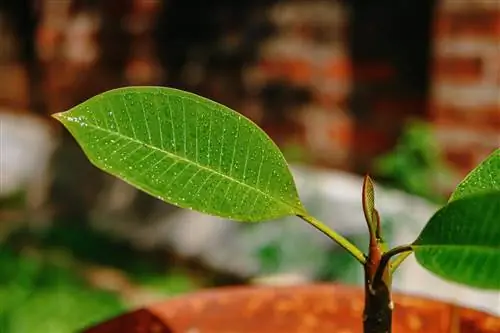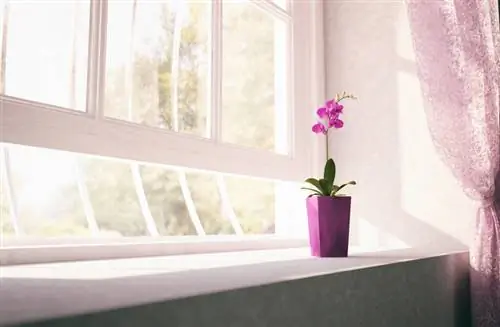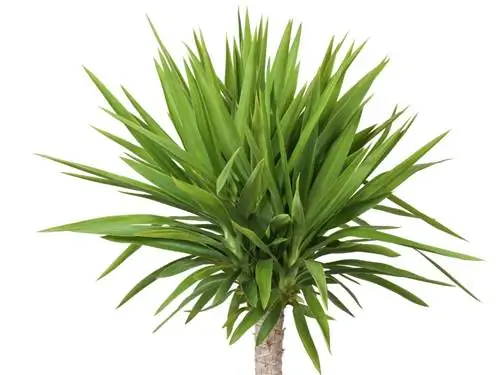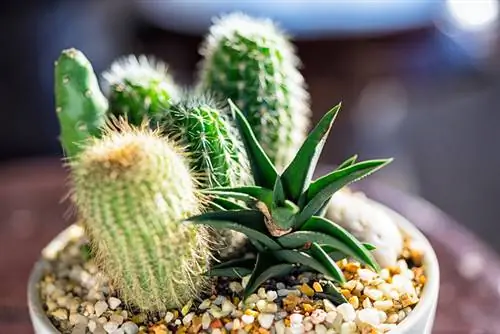- Author admin [email protected].
- Public 2023-12-25 17:45.
- Last modified 2025-01-23 11:22.
Although the frangipani with the botanical name Plumeria is one of the plants that loves a sunny location, it can be damaged by too much sun. We explain what a frangipani sunburn looks like and how it can be avoided.
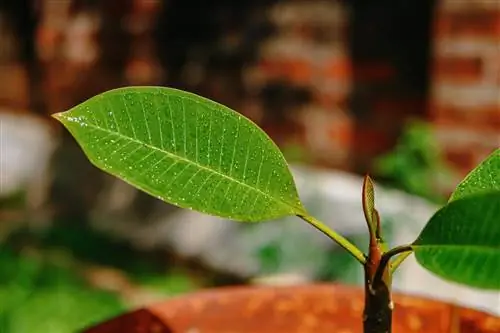
What does sunburn look like on frangipani?
Sunburn can be recognized by the fact that the green leaves on the top and bottom suddenly havebrown spots. These are burns of the plant caused by excessive exposure to sunlight. Dried leaves and shoot tips are also possible signs.
What causes sunburn on frangipani?
If the frangipani is placed outdoors after overwintering, sunburn can occur if theplant is not slowly accustomed to the warmth. Too much sun in summer, on the other hand, does not harm the plants that are used to it. Note: After overwintering, the plumeria, which is sometimes also called the temple tree, is also very susceptible to root rot, especially if it is closed during winter dormancy was damp and waterlogging formed.
How much sun can the frangipani tolerate?
The frangipani loves asunny locationEven strong sunlight does not affect the plant, which shows its strongly scented flowers from June to September. At leastfive to six hours of sun per dayare important for the plant. Aday temperature of 20 °C is ideal, especially during the growth phase. A wind-protected, south-facing house wall is the best location for the plumeria.
Can you avoid sunburn with frangipani?
To prevent sun damage, the frangipani should first beplaced in the shade for a few days after the winter so that it can get used to the daylight in the garden. Only then can the plant move back to its favorite place in full sun. This can reliably prevent the leaves from burning. When watering, it is important to ensure that the leaves remain dry and are not wetted with water. Otherwise there is a risk of burns and the risk of infectious diseases increases.
Can a burnt frangipani still be saved?
Even if the frangipani has suffered sunburn, the plant can be saved and does not need to be thrown away. Consider the following advice:
- Put the plant back in a shady place.
- Cut off damaged, burnt leaves and shoot tips.
A radical pruning is not necessary. To support good growth, the plumeria should be planted in nutrient-rich, well-drained soil and fertilized regularly.
Tip
The right wintering
When the temperatures permanently fall below 15 °C, the frangipani must be moved indoors to a bright location or a heated greenhouse. The ideal temperature for overwintering is between 15 and 18 °C. The cool basement is definitely unsuitable. Fertilizing can be stopped from September onwards; watering should be largely avoided from November to mid-March.

